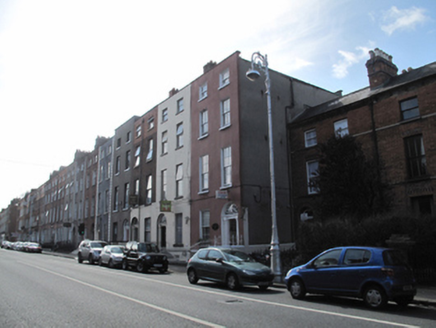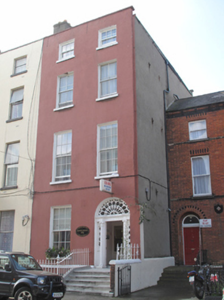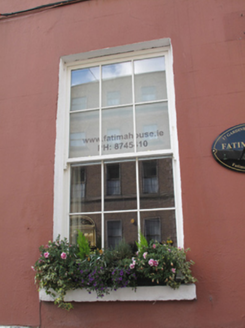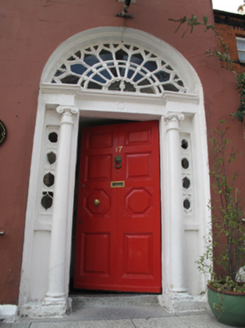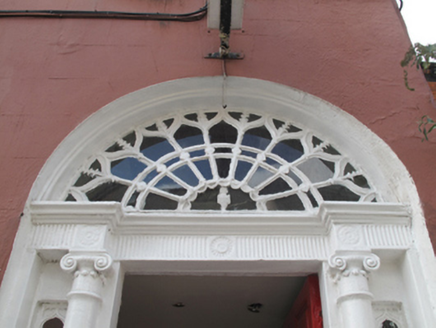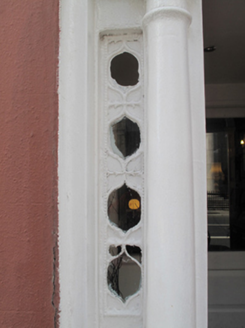Survey Data
Reg No
50010835
Rating
Regional
Categories of Special Interest
Architectural, Artistic
Previous Name
Fatima House
Original Use
House
In Use As
Guest house/b&b
Date
1790 - 1820
Coordinates
315884, 235545
Date Recorded
13/09/2011
Date Updated
--/--/--
Description
Attached end-of-terrace two-bay four-storey house over raised basement, built c.1805, as one of pair. Now in use as guest house. M-plan slate roof, hipped to north, hidden behind parapet wall with painted masonry coping. Replacement rainwater goods to north gable and shared rendered chimneystack with clay pots to south party wall. Painted ruled-and-lined rendered walls to painted masonry plinth course above lined-and-ruled rendered basement. Rendered wall to north gable elevation with projecting render plinth course raised to ground floor level. Square-headed window openings with flush rendered reveals, painted stone sills and replacement timber sliding sash windows, three-over-one pane (top lift possibly original) to basement with iron grille, and six-over-six pane to ground and first floors, two-over-two pane to second floor and three-over-three pane to top floor. Round-headed door opening with tripartite painted masonry Ionic doorcase, and original eight-panel timber door with decorative octagonal panels and brass furniture flanked by engaged Ionic columns on plinth bases and original decorative tracery sidelights, surmounted by fluted and stepped lintel cornice with original peacock fanlight. Door opens onto terrazzo paved platform and five terrazzo steps bridging basement area. Platform and basement area enclosed by original wrought-iron railing and cast-iron corner posts on terrazzo plinth wall, later cast-iron railing on red brick wall to north of platform. Interior retains original moulded plaster cornice, timber panelled doors and architraves and panelled window linings. Entrance/stair hall contains original dog-leg open-string timber stair with turned balusters, continuous polished handrail and curtail with panelled round-headed arch to spine wall.
Appraisal
This townhouse stands at the south end of a Georgian terrace and is abutted by set-back Victorian terraces to the north. It has an exemplary doorcase with an elaborate peacock fanlight, sidelights and Ionic columns and retains some panelled doors, plaster features and other details to the interior. The retention of timber sash windows adds to its appearance. The building conforms to the rhythmic fenestration of the remainder of the terrace and plays an important part in retaining the character of the area laid out in the 1790s by Luke Gardiner II as part of the development of Mountjoy Square,
